#frederick mckinley jones
Photo
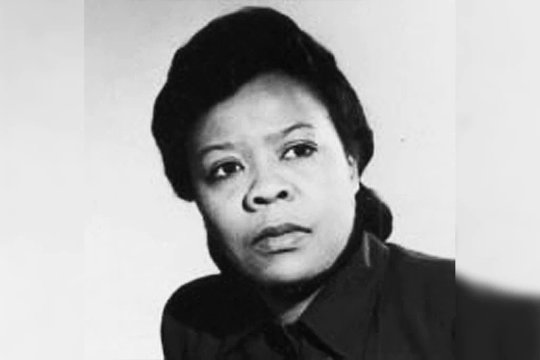

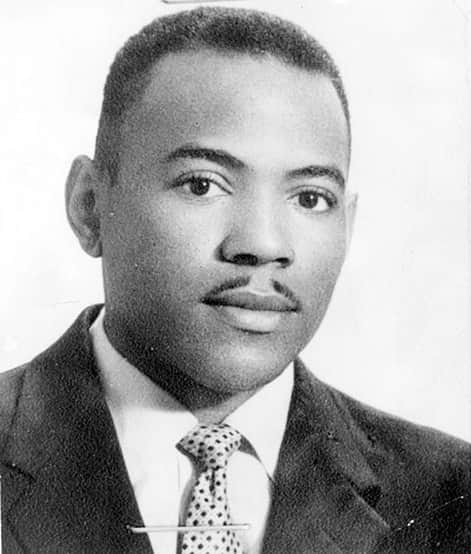

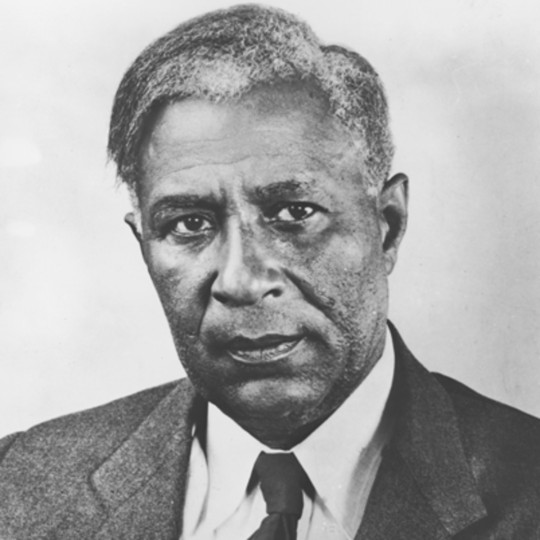
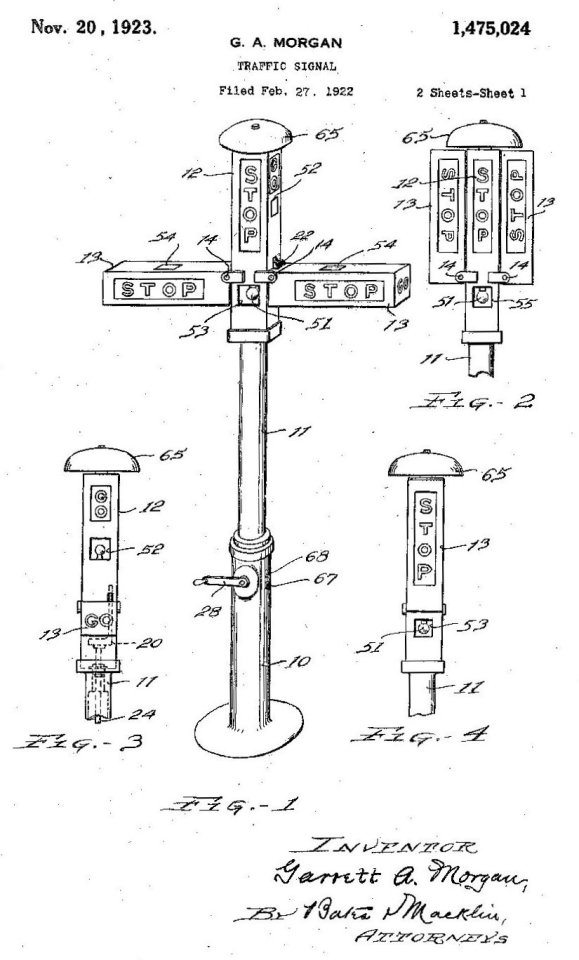
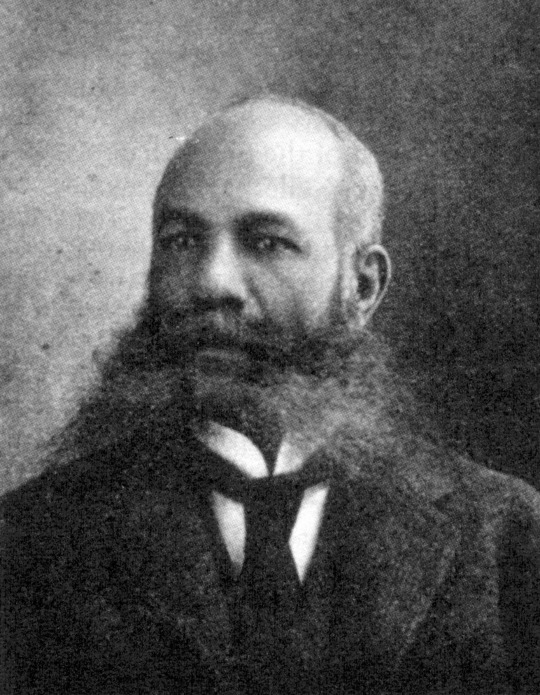
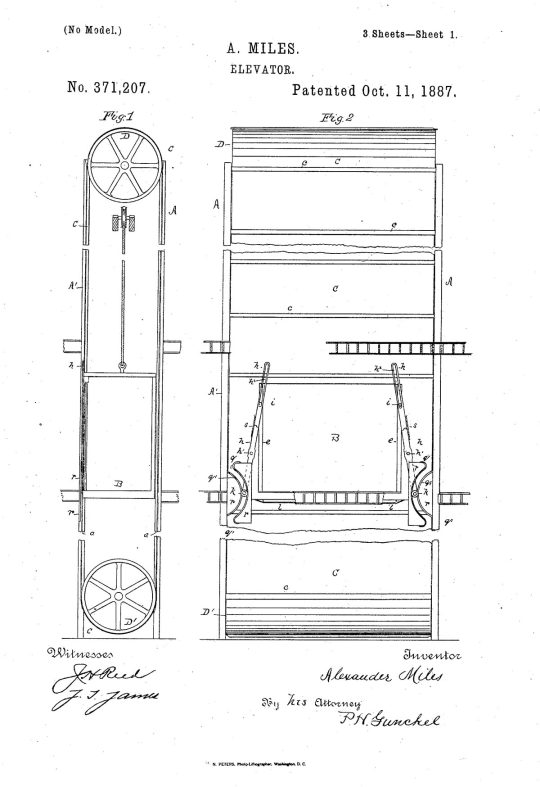


Marie Van Brittan Brown invented the first home surveillance security system.
She felt uneasy in her neighborhood and the police were unreliable. Her husband, Albert Brown, an electronics technician, was away many nights. So, she took matters in her own hands and patented the modern home security system. In 1966, Brown designed a closed-circuit security system that monitored visitors via camera and projected their images onto a television monitor. Not only that, a panic button contacted the police immediately.
Brown envisioned a series of three to four peepholes at various heights; a camera would slide over these peepholes to assess the outside area. A radio-controlled wireless system would transfer the image to a monitor, or set of monitors, positioned anywhere in the residence. At the monitor, a resident could not only see who was at the door, she could also talk with that person via a set of two-way microphones. A remote control option allowed her to lock or unlock the door from a safe, or more convenient distance. Brown filed the patent for her “home security system utilizing television surveillance” on August 1, 1966.
Osbourn Dorsey invented the door knob and door stop.
In 1878, Dorsey submitted a patent for improvements on the door latching device, and thus introduced America to the door knob. Prior to doorknobs, most people used latch-string devices which could only be opened from the inside. Wealthier individuals often used key holes and locks.
Garrett Morgan invented the three-position traffic signal and the gas mask.
After watching firefighters struggle to breathe due to smoke inhalation, Morgan was struck with the idea of a safety hood. The device, which he patented in 1914, consisted of a hood placed over an individual’s head, connected to a long tube that reached the ground. Since hot air and smoke rises, the tube on the ground would deliver clean air to the person.
Morgan’s safety hood is widely considered a precursor to the gas mask. With the onset of World War I – and the use of poisonous gas – Morgan won a contract with the U.S. Navy. The hood became standard equipment for the U.S. Army during the war.
In 1916, the city of Cleveland was drilling a new tunnel under Lake Erie. Workers hit a pocket of natural gas, creating an explosion that trapped them underground. When Morgan heard what had happened, he and his brother donned the safety hoods and entered the tunnel themselves. They were able to save two lives.
One day Morgan witnessed a terrible accident at a Cleveland intersection and his brain once again went into solving mode. Traffic signals had already been invented but they only consisted of two signals. The problem was that drivers didn’t know when the “Go” signal was going to switch to the “Stop” signal. The result was that drivers would have to stop abruptly or still be in the intersection when vehicles traveling in other directions began to move.
To solve this, Morgan invented a T-shaped traffic signal that had a third, “caution” signal. When this signal was on, traffic in all directions stopped and intersections would clear. It would also allow pedestrians to cross before traffic started moving again.
He went on to patent several inventions, including an improved sewing machine.
Alexander Miles invented the automatic elevator doors.
Miles experienced great success as a barber in Duluth, opening a barbershop in the four-story St. Louis Hotel. He even used his savings to purchase a real estate office. His business achievements earned him a spot as the first Black member of the Duluth Chamber of Commerce. In 1884, Miles built a three-story brownstone building in an area that became known as the “Miles Block.”
During elevator rides in his buildings, Miles witnessed the risks associated with an elevator shaft door accidentally left open. There were many examples of people accidentally falling to their death through the shaft because the elevator doors at the time had to be manually operated. Miles was determined to solve this problem. He attached a flexible belt to the elevator cage, which touched drums positioned along the elevator shaft, directly above and below the floors. His invention allowed elevator shaft doors to operate at the correct times. The elevator doors were automated through a series of levers and rollers. Alexander Miles was granted a patent for his invention on October 11, 1887 (U.S. Patent 371,207).
Frederick McKinley Jones invented the refrigerated truck.
Jones often aided local doctors by driving them around for house calls during the winter season. When navigation through the snow proved difficult, Jones attached skis to the undercarriage of an old airplane body and attached an airplane propeller to a motor. He was soon whisking doctors around town at high speeds in his new “snow machine.” But unfortunately, he didn’t patent it.
When one of the doctors he worked for complained that he had to wait for patients to come into his office for x-ray exams, Jones created a portable x-ray machine that could be taken to the patient. Unfortunately, like many of his early inventions, Jones never thought to apply for a patent. He watched helplessly as other men made fortunes off of their versions of the same device. Jones began new projects including a radio transmitter, personal radio sets, and eventually motion picture devices.
In 1939, Jones invented and received a patent for an automatic ticket-dispensing machine to be used at movie theaters. He later sold the patent rights to RCA.
Jones invented the first successful system for mobile refrigeration—the roof-mounted cooling system that’s used to refrigerate goods on trucks during extended transportation. His invention eliminated the far less effective use of ice and salt to preserve foods for transport, greatly extending the distance over which food could be successfully delivered.
He received a patent for his invention and co-founded the U.S. Thermo Control Company, later known as Thermo King. The company was critical during World War II, helping to preserve blood, food, and supplies during the war with an air-conditioning unit for military field hospitals and a refrigerator for military field kitchens.
The Thermo King transformed the shipping and grocery businesses. Grocery chains were now able to import and export products that previously could only have been shipped as canned goods. As a result, the frozen food industry was born and for the first time consumers could enjoy fresh foods from around the globe and U.S. Thermo became a multimillion-dollar company.
Jones took out more than 60 patents between 1919 and 1945.
Also,


#marie van brittan brown#osbourn dorsey#garrett morgan#alexander miles#frederick mckinley jones#dr shirley ann jackson#black american inventors#black american history
149 notes
·
View notes
Text
Frederick McKinley Jones: The Black Genius Who Invented Portable Refrige...
youtube
0 notes
Text
HAPPY BLACK HISTORY MONTH! 🤎🤎🤎
For Day 2, I wanted to give a list of black inventors and their inventions. Due to the whitewashing of history, many people don’t know about the revolutionary inventions that black people created. Some inventions were stolen by white inventors and patented so that these black inventors never got credit or revenue. There were also many instances of discrimination that didn’t allow black inventors to patent their inventions; they were often asked for extensive proof and sometimes, their inventions were destroyed and the ideas were given to white inventors to take credit for instead. Thankfully, that isn’t the case anymore and black inventors have ingrained themselves into history books and text. Let us look at some of the inventions that make life today much easier.
Michael Croslin(1933-1989): Blood Pulse and Monitoring Device
Frederick McKinley Jones(1893-1961): Roof Mounted Refrigeration for Vehicles
Garrett Morgan(1877-1963): Gas Mask and 3 Light Traffic Signal
Sarah Boone(1847-1904): Improved Ironing Board
Mary Van Brittan Brown(1922-1999): Home Camera Security System
Alexander Miles: Automatic Elevator Doors
Henry Brown(1800s):Safe Deposit Box
Alfred L. Cralle(1866-1920): Ice Cream Scoop
Lyda Newman(1898): Synthetic Hairbrush
Doctor Shirley Jackson: Breakthroughs in scientific research that allowed others to create call waiting, Caller ID, the portable fax and many others
Albert Richardson(1894): Casket Lowering System
Doctor Patricia Bath(1986): Invented Laser Probe that revolutionized cataract and other eyes surgeries, even restoring the sight of many individuals
George Crum(1824-1914): Potato Chips
Charles Drew(1904-1950): Blood Banks
David N. Crosthwait(1898-1976): Heating System
These are just a few of the hundreds of things black people have invented and so many of them are used to make life easier and better. So we thank all of these inventors for what they endured and the study they set forth to give us not only simple luxuries and pleasures but also advancements in medicine and science.
THANK YOU BLACK INVENTORS AND SCIENTISTS🤎🤎🤎🤎
21 notes
·
View notes
Text
Black inventors

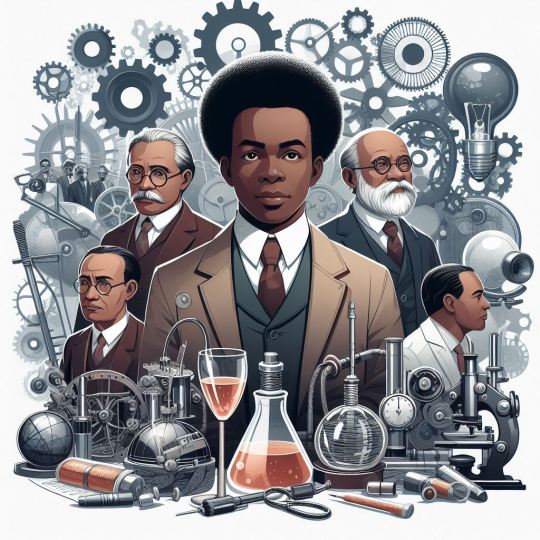
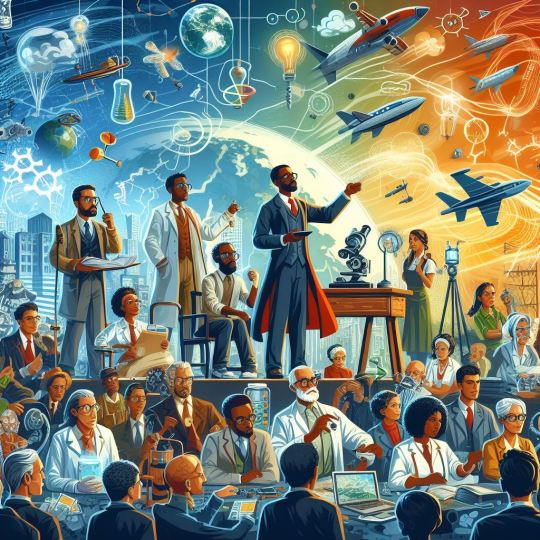
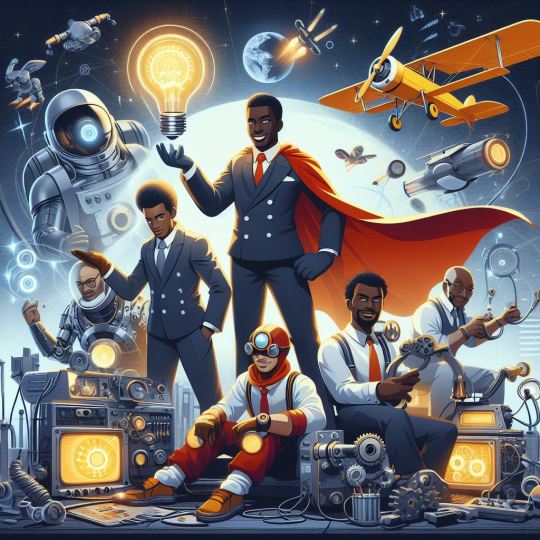
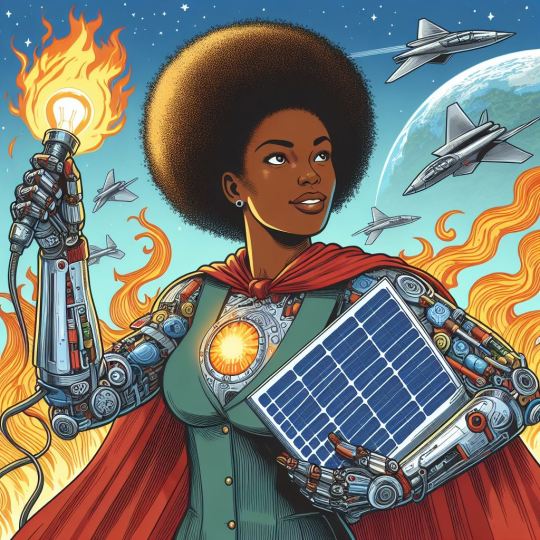


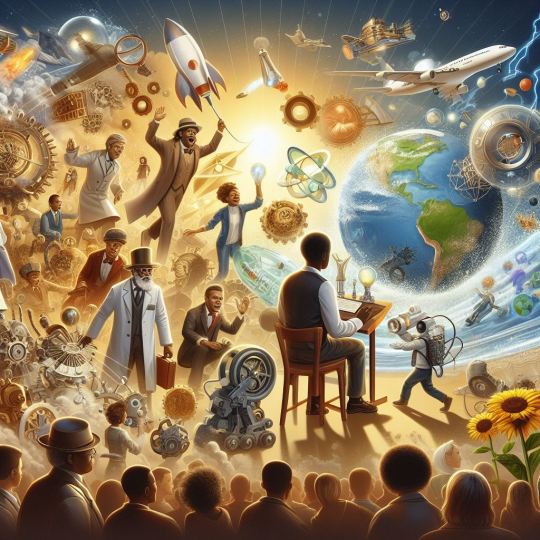
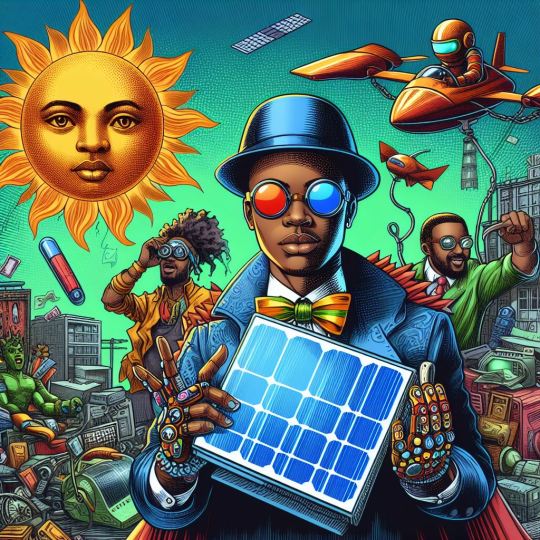
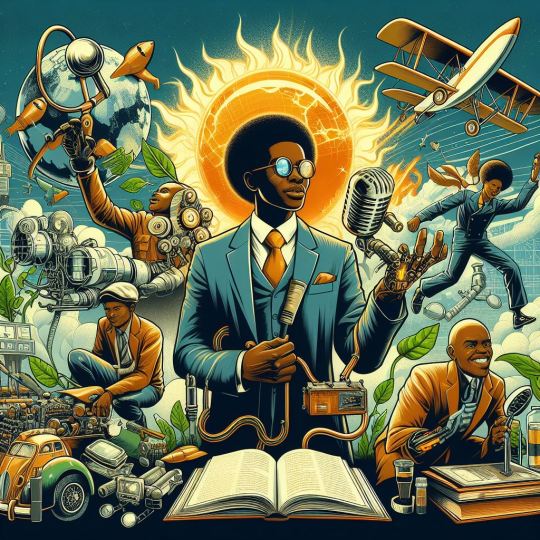

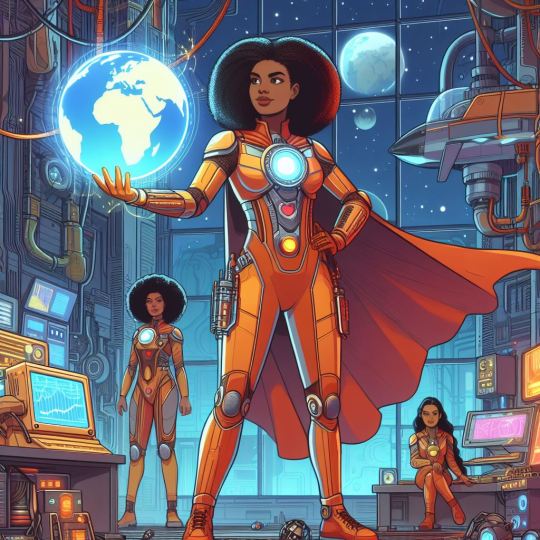
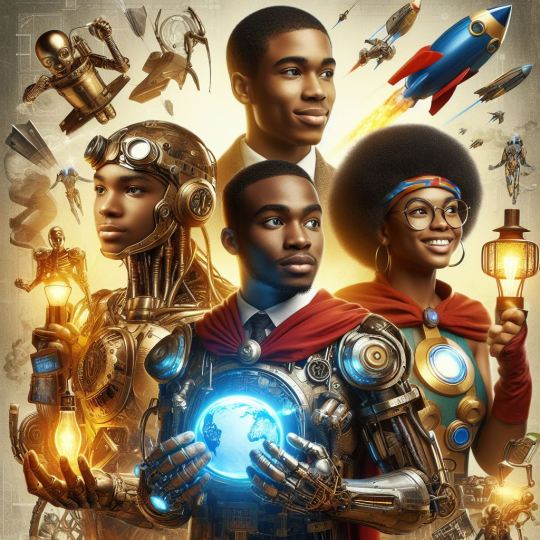
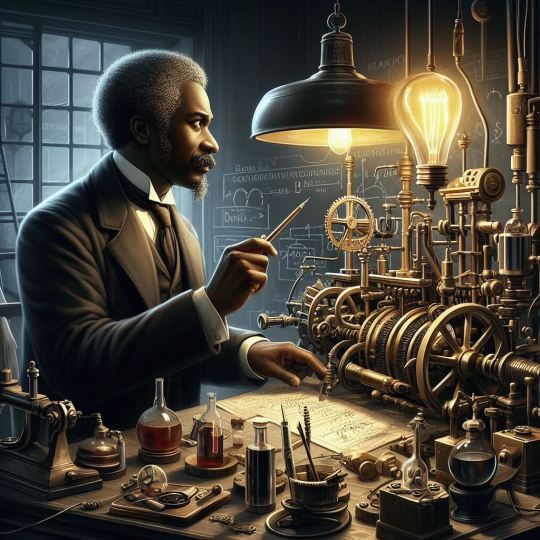
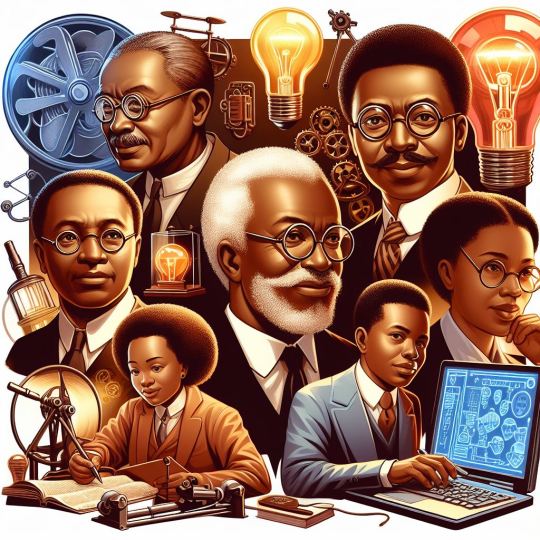
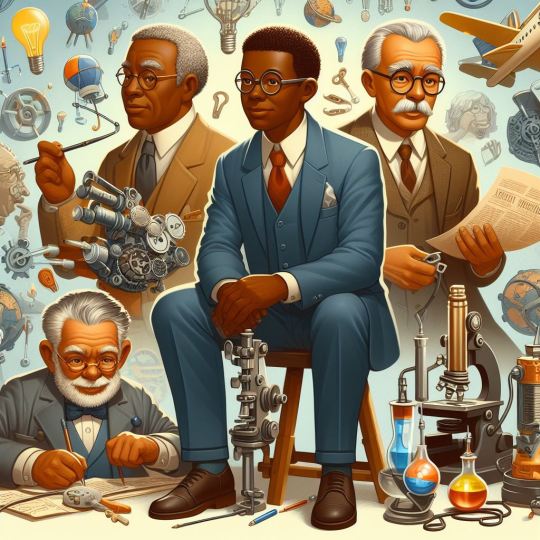
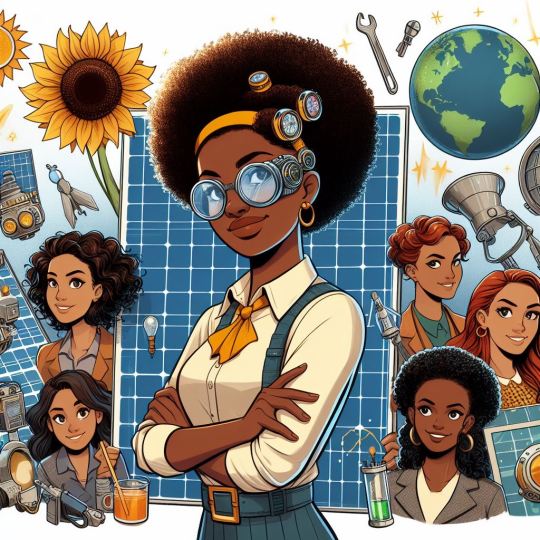
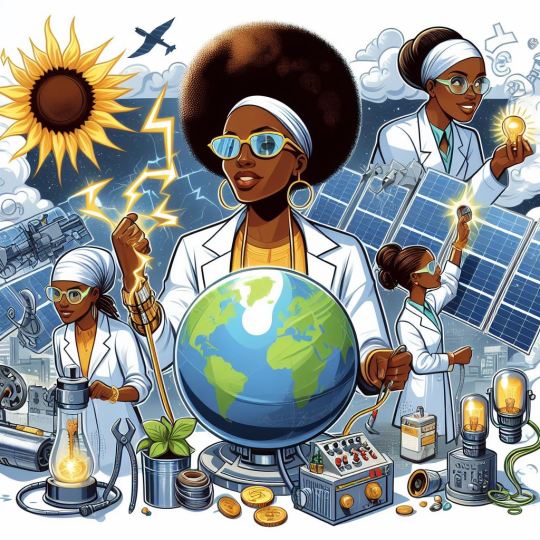
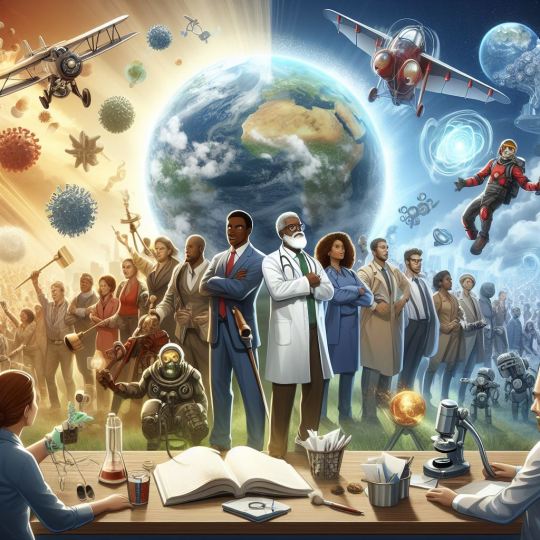
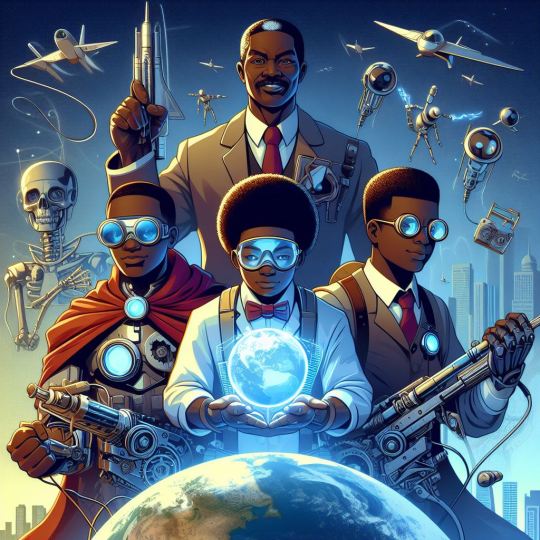

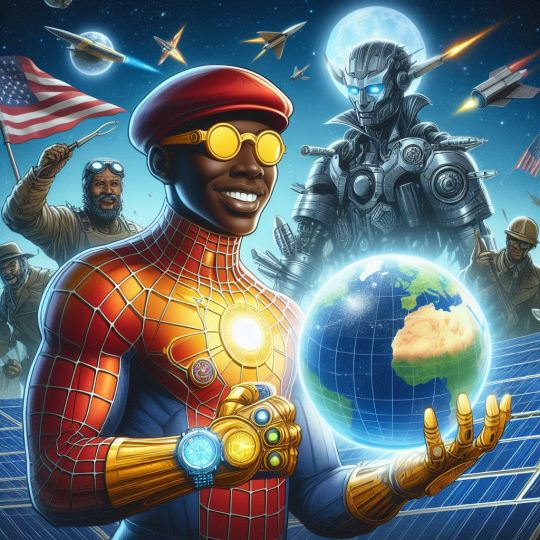
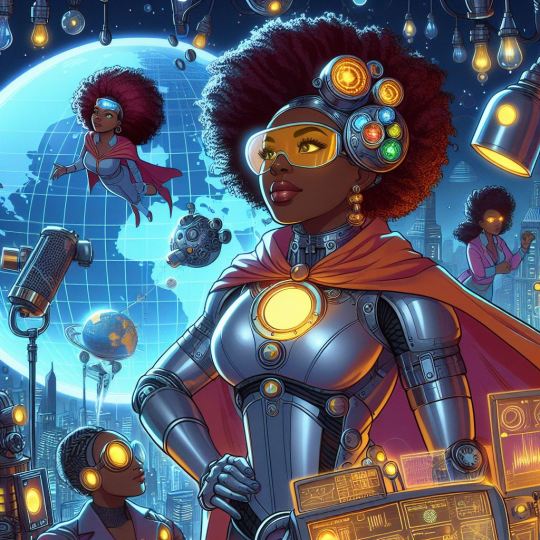
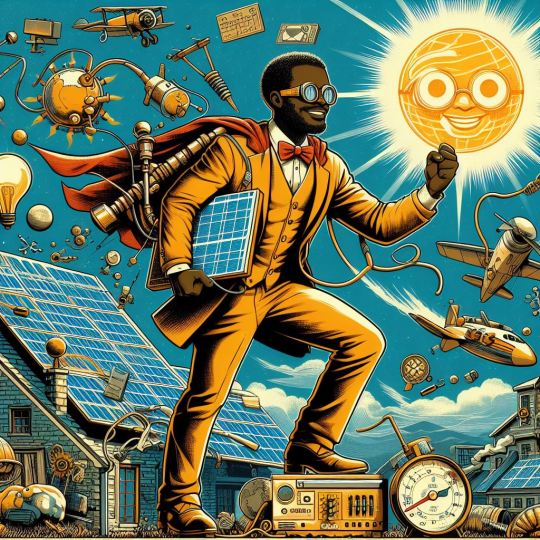
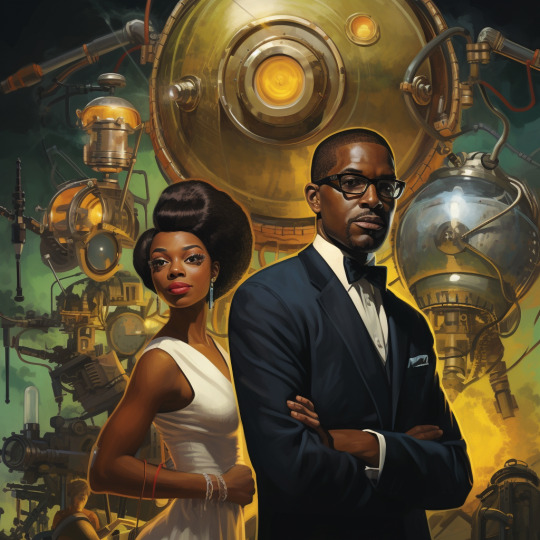

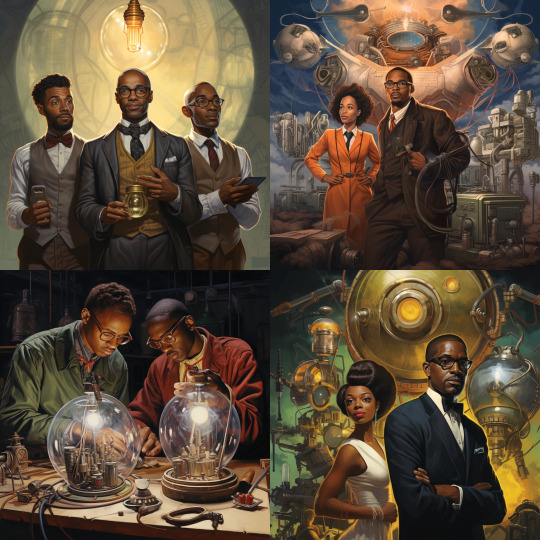
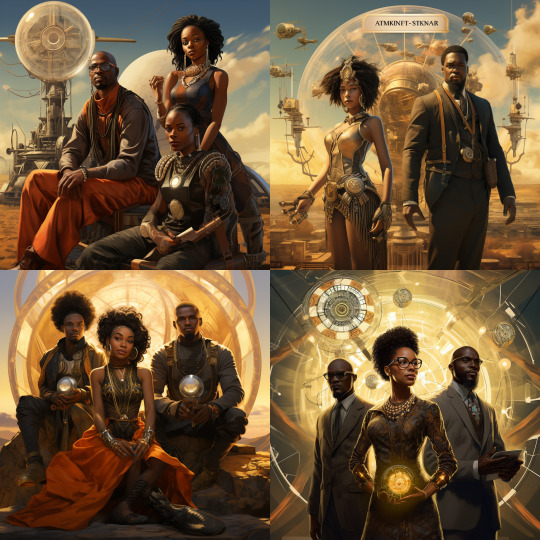

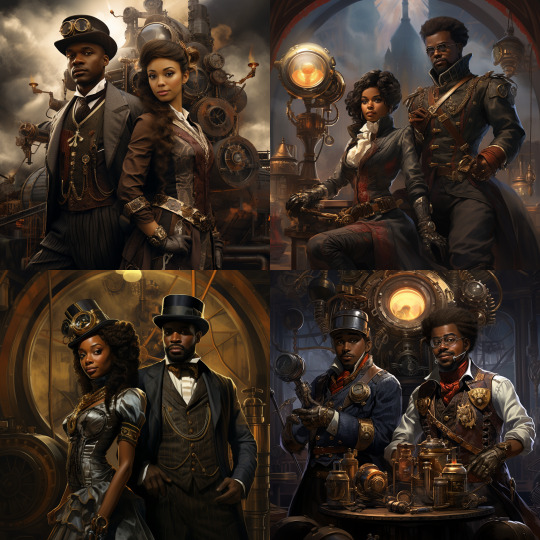
From Perplexity:
Famous black inventors have significantly contributed to various fields, from everyday household items to groundbreaking technological advancements. Here are some notable figures:
George Crum (1824-1914): A chef who is credited with inventing the potato chip in 1853[1].
Frederick McKinley Jones (1893-1961): Developed refrigeration equipment for trucks, trains, ships, and planes, receiving over 40 patents. His invention, the Thermo King, revolutionized the food and medical transport industries[1].
Granville T. Woods (1856-1910): Accumulated almost 60 patents, improving railroad functioning. Notably, he invented the induction telegraph system for train communication[1].
George Washington Carver (1864-1943): An agricultural chemist who developed 518 products from peanuts and sweet potatoes, including ink, dye, soap, and synthetic rubber[1].
Madam C.J. Walker (1867-1919): Became the first African American woman self-made millionaire by creating a line of hair products for African American women[1].
Garrett Morgan (1877-1963): Invented the traffic signal and a safety hood that served as a prototype for the gas mask[1].
Mary Beatrice Davidson Kenner: Patented the sanitary belt in 1957, a significant advancement in women's health and hygiene[1].
Thomas L. Jennings (1791–1859): The first African American to receive a U.S. patent, for a dry-cleaning process[4].
Patricia Bath (1942-2019): Invented a laser cataract treatment, becoming the first African American female doctor to receive a medical patent[4].
Mark Dean (1957-present): Holds over 20 patents, including contributions to the creation of the color PC monitor and the first gigahertz chip[4].
Elijah McCoy (1844-1929): Known for his invention of the automatic lubricator for oiling steam engines, leading to the phrase "the real McCoy" to denote something authentic[4].
These inventors have left a lasting impact on society, demonstrating ingenuity and perseverance in the face of challenges.
Citations:
[1] https://www.oprahdaily.com/life/work-money/g30877473/african-american-inventors/
[2] https://www.parents.com/kids/education/world-changing-black-inventors-that-every-kid-should-know-about/
[3] https://www.black-inventor.com
[4] https://www.biography.com/inventors/g46697619/famous-black-inventors
[5] https://en.wikipedia.org/wiki/List_of_African-American_inventors_and_scientists
From Gemini (formerly Bard):
20 Famous Black Investors with Short Descriptions:
Dr. Shirley Jackson: First Black woman to earn a doctorate in nuclear physics, invested in research and development for the U.S. Department of Defense.
Robert F. Smith: Founded Vista Equity Partners, a private equity firm with over $85 billion in assets under management. Known for his philanthropic endeavors.
Oprah Winfrey: Media mogul and investor, known for her investments in cable channels, production companies, and Weight Watchers.
Udayan I. Lekhraj: Founded CMG Partners, a private equity firm specializing in healthcare investments. Advocate for diversity and inclusion in venture capital.
Catherine Hughes: Founded Urban One, a media company serving the African American community. First Black woman to chair a publicly traded company in the U.S.
Rodney Bryant: Co-founded JUST Capital, a firm that measures and incentivizes corporations to prioritize stakeholder capitalism.
Ellen Johnson Sirleaf: Former President of Liberia, Nobel Peace Prize winner. Focused on economic development and investment in her country.
Ronald Lauder: CEO of Estee Lauder Companies, known for his investments in the beauty industry and philanthropic work.
Charles R. Bronfman: Chairman of The Seagram Company Ltd., invested in various industries including entertainment, real estate, and philanthropy.
John Rogers Jr.: Founded Ariel Investments, a mutual fund company with over $28 billion in assets under management. Advocate for responsible investing.
Marc Morial: Former mayor of New Orleans, currently president of the National Urban League. Focused on economic empowerment of Black communities.
Ronald Watkins: Founding CEO of Watkins Investing Group, invests in real estate and businesses within the Black community.
Melody Hobson: President and CEO of Ariel Investments, known for her work on financial literacy and diversity in boardrooms.
Aisha Evans: Founded BE Capital, a venture capital firm focused on Black and Latinx tech entrepreneurs.
Kevin Hart: Comedian and investor, known for his investments in production companies, streaming platforms, and sports teams.
Jay-Z: Rapper and entrepreneur, known for his investments in music streaming, sports teams, and venture capital funds.
Will Smith: Actor and investor, known for his investments in production companies, media platforms, and venture capital funds.
Serena Williams: Tennis champion and investor, known for her investments in venture capital funds focused on women and diverse founders.
Rihanna: Singer and entrepreneur, known for her investments in beauty brands, fashion lines, and technology startups.
LeBron James: Basketball player and investor, known for his investments in media companies, production companies, and technology startups.
Please note: This list is not exhaustive and can be debated in terms of individual importance and impact.
Reading List on Black Inventors:
Black Inventors: Lives That Mattered by Darlene R. Medford
Hidden Figures: The American Dream and the Untold Story of the Black Women Mathematicians Who Helped Win the Space Race by Margot Lee Shetterly
Lifting the Veil: Celebrating the Unsung Heroes of Black History by Michael Hill
Lost Genius: The Forgotten Black Inventors Who Changed the World by Dennis Freeman
Pioneering Women in American Mathematics: From Agnes Scott to Emmy Noether by Pamela Prochazka
Black Inventors in Science and Technology by Shirley J. Smith
A Colored Man's Reminiscences of James M. Whitfield: With Recollections of the Early Struggles of Colored Men in Boston by Wilbur H. Siebert
Inventing the Future: Black Inventors in Science and Technology by Geneva Gay
African Americans in Science, Math, and Invention by Darlene R. Medford
Black Inventors in the United States by Darlene R. Medford
This list offers a variety of books covering different periods and areas of innovation by Black inventors. Consider exploring further based on your specific interests.
I hope this information is helpful!
#african american history#black history month#black history month 2024#dalle3#midjourney#black inventors#blackhistorymonth#africanamericanhistory#afrofuturism#solar punk#steampunk
13 notes
·
View notes
Text
MOGAI BHM- Belated Day 16!
happy BHM! today i’m going to be listing different important inventions by Black people!
Black Inventors-
Marie Van Brittan Brown invented modern home security systems.
Jane C. Wright invented several chemotherapy drugs still in use today.
Alan Emtage invented the first internet browser, which he called ‘Archie’.
George Carruthers invented the ultraviolet spectrograph, which eventually accompanied probes to the moon.
Mark Dean invented forms of processor chips and co-created the IBM computer in 1987.
Patricia Bath pioneered early laser cataract surgery.
Lonnie Johnson invented the popular Super Soaker.
Lewis Howard Latimer helped invent the telephone and invented carbon filaments which hugely improved incandescent light bulbs.
Garrett Morgan invented a form of a gas mask and the three-position traffic signal.
Dr. James West helped co-invent microphone technology.
Lisa Gelobter was crucial to inventing Shockwave, the internet’s first web animation technology.
Frederick McKinley Jones invented and innovated refrigeration technology, including refrigerated trucks which were crucial in WWII.
Alexander Miles invented automatic elevator doors.
Madame CJ Walker invented a huge hair and beauty line for African American hair.
Elijah McCoy invented the portable ironing board and Sarah Boone innovated it.
Alice Parker invented a heating furnace system still used by many today.
Charles Brooks invented the design and technology for modern trucks that clean and sweep city streets.
George Alcorn invented x-ray imaging spectroscopy.
Benjamin Banneker invented America’s first clock.
Otis Boykin invented improved electrical resistors that are used today in everything from TVs to computers to radios.
Dr. Charles Drew created innovations in blood plasma that led to the creation of blood banks.
Dr. Philip Emeagwali invented the world’s fastest computer.
James Parsons work led to the invention of stainless steel.
George Washington Carver invented many, many culinary products derived from peanuts.
There are many, many more. I can not list them all here. I highly recommend looking more into the history of Black inventors and innovators, especially in the field of STEM! There are some good resources below to get you started!
Tagging @metalheadsforblacklivesmatter
Sources-
https://www.black-inventor.com/
https://www.eduporium.com/blog/eduporium-weekly-celebrating-significant-stem-accomplishments-by-black-innovators/
https://sphero.com/blogs/news/black-leaders-in-stem
https://www.idtech.com/blog/black-stem-innovators-who-defined-modern-world
https://news.vmware.com/dei/10-black-technology-inventors-innovators
https://www.biography.com/inventors/madam-cj-walker-black-inventors
https://www.black-inventor.com/george-alcorn
https://www.black-inventor.com/benjamin-banneker
https://www.black-inventor.com/otis-boykin
https://www.black-inventor.com/dr-charles-drew
https://education.nationalgeographic.org/resource/african-american-inventors-20th-and-21st-century/
60 notes
·
View notes
Text
7 African Americans who changed the way we cook and eat
February is African American History Month. To commemorate, we pay tribute to some of the African Americans in history who have made huge contributions to the way we prepare and eat food both here in California and all over the USA.George Washington Carver

George Washington Carver – Agriculture
George Washington Carver pioneered the growth of peanuts as an alternative to cotton to help sustain the farmers and their families and as a way to promote crop rotation. While he may not have been the actual inventor of peanut butter (it had been made as early as the Aztec peoples in Mexico) his interest in botany made him one of the earliest environmentalist in his time.

George Crum – Potato Chips
Purportedly, It was Crum who was responsible for creating potato chips as the customer he was serving at the time kept sending back his french fries for being too thick. Out of spite, he sliced a batch so thin, they became crispy after being deep fried. They were then brought to the customer, who actually enjoyed them, and thus one of the most popular snacks was born. Later in life, he opened up a restaurant in the resort towns of Malta, New York.

Joseph Lee – Bread kneading machine Joseph Lee’s Bread Kneading machine Source:blackinhistory.tumblr.com
A successful baker, restaurateur and hotelier, Joseph Lee invented a machine that would take day old bread and turn it into crumbs used for cooking into other dishes, later on, he would invent a machine that would knead bread dough more efficiently, which would result in a higher quality product. This machine is the predecessor to all modern day bread makers and, for his efforts, he received a patent for both.Ashbourne’s biscuit cutter
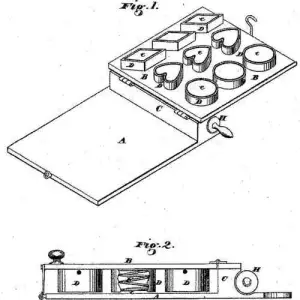
Alexander P Ashbourne – Biscuit cutter
Something so insignificant as a cutter for biscuits might not be a big deal to us in the present, but during a time when biscuits were a staple on the dinner table, an invention like this ensures a consistently even batch each and every time. Another interesting fact: Alexander P. Ashbourne also patented a process for treating and refining coconut oil.Alfred Craelle’s Ice Cream Scoop Source: blackinhistory.tumblr.com

Alfred Craelle – Ice Cream Scoop
Inspired by the ineffective way that ice cream was being served to customers at the time, Alfred Craelle was the first African American in Pittsburgh, Pennsylvania to receive a patent for his invention of a more efficient ice cream scoop.Source: Minnpost.com
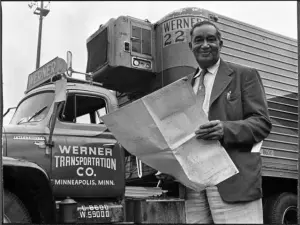
Frederick McKinley Jones – Refrigeration
in 1935, Frederick Jones created the first portable refrigeration units, making it possible to transport perishble items, including foods, over long distances. His creation saw heavy use in WW II not just for food, but for other perishables like medical supplies and blood packs.
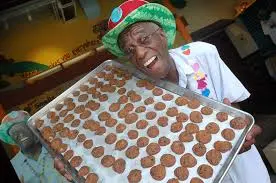
Wallace “Wally” Amos – Founder of Famous Amos cookies
Wallace Amos had an interest in cooking growing up with his aunt, he was especially interested in his Aunt’s chocolate chip cookie recipe. After a career in both the US Air Force and then William Morris Agency, In 1975, Mr. Amos set up his first cookie shop with a $75,000 dollar loan from Marvin Gaye and Helen Reddy. After selling the original company, he now operates a new comapny called “Uncle Noname’s Cookie Company” and then later on, founding “Uncle Noname’s Muffin Company” with a former distributor of his original company.
#7 African Americans who changed the way we cook and eat#Black Foodies#Black History Matters#Black Food History#Famous Amos#George Crum#GW Carver
8 notes
·
View notes
Photo

There are 3 things to do become successful…1st: Don’t be afraid to get your hands dirty…2nd: You have to read…3rd: You have to believe in yourself, don’t listen to others tell you you’re wrong. ~Frederick Mckinley Jones~ Black Inventor most famous for developing the first practical transport refrigeration unit for trucks. #blackhistorymonth #nastygraphixs Created with @layoutfrominstagram #wealth #blackexcellence (at Black Hills) https://www.instagram.com/p/Co79d_WJrJN/?igshid=NGJjMDIxMWI=
8 notes
·
View notes
Photo

Ruth Inge Hardison (February 3, 1914 – March 23, 2016) was a sculptor, artist, and photographer, known for her busts entitled "Negro Giants in History". Her collection called "Our Folks", which features sculpted portraits of everyday people is of note. Her artistic productions surround historical African American portraiture, and she was interested in representing the unspoken voices of the African American past. She was the only female in the Black Academy of Arts and Letters. She was born in Portsmouth, Virginia, her family moved to Brooklyn. She acted in the Broadway Productions of "Sweet River" and "Country Wife". She began sculpting as a hobby. When she took part in the year-long "What a Life" production, she created a sculpture of its cast, which was displayed at the Mansfield Theatre. She studied Music and Creative Writing at Vassar College. She studied at the Art Students League of New York and Tennessee State University. Her works begin as clay, wax, or plaster molds, and were cast into cast stone or bronze. Her first bust in that series was of Harriet Tubman, which measured eight inches in height; she has created busts of W. E. B. Du Bois, Paul Robeson, George Washington Carver, Frederick Douglass, Rev. Dr. Martin Luther King, Sojourner Truth, and Mary McLeod Bethune, among others. Her bronze Douglass bust, for example, was unveiled at Princeton's Firestone Library. Other public works include a 7-foot abstract figure called "Jubilee" which stands on the campus of Medgar Evers College, a series of 18 children on an outdoor wall of I.S.74 in Hunts Point in the Bronx, and a five-foot mother and child given to Mount Sinai Hospital to express her gratitude for their help in delivering her only child. She created a series of Ingenious Americans, little-known African American inventors and other notables commissioned and sold by Old Taylor Whiskey. The series of nine busts included Benjamin Banneker, Charles Richard Drew, Matthew Henson, Frederick McKinley Jones, Lewis Latimer, Garrett Morgan, Norbert Rillieux, Dr. Daniel Hale Williams, and Granville Woods. #africanhistory365 #africanexcellence https://www.instagram.com/p/CoMzVt-rWfN/?igshid=NGJjMDIxMWI=
8 notes
·
View notes
Photo

𝗙𝗿𝗲𝗱𝗲𝗿𝗶𝗰𝗸 𝗗𝗼𝘂𝗴𝗹𝗮𝘀𝘀 𝗢𝘄𝗻𝗲𝗱 𝗮 𝗖𝗼𝗽𝘆 𝗼𝗳 𝗮 𝗦𝘁𝗿𝗮𝗱𝗶𝘃𝗮𝗿𝗶𝘂𝘀, 𝗛𝗶𝘀 𝗚𝗿𝗮𝗻𝗱𝘀𝗼𝗻 𝗣𝗹𝗮𝘆𝗲𝗱 𝗳𝗼𝗿 𝗧𝘄𝗼 𝗣𝗿𝗲𝘀𝗶𝗱𝗲𝗻𝘁𝘀 𝗙𝗿𝗲𝗱𝗲𝗿𝗶𝗰𝗸𝗗𝗼𝘂𝗴𝗹𝗮𝘀𝘀 wasn’t just an abolitionist leader, author, and statesman – he was also a music lover. He wrote passionately about the importance of music in communities of enslaved people in his autobiography, Narrative of the Life of Frederick Douglass. In fact, he wrote that music gave him his “first glimmering conception of the dehumanizing character of slavery. I can never get rid of that conception. Those songs still follow me, to deepen my hatred of slavery, and quicken my sympathies for my brethren in bonds.” Later, when Frederick Douglass was free from slavery, music continued to play an important part of his life. In his home, he shared all kinds of music with his family and guests. An avid violinist, one instrument he owned was a copy of a Stradivarius that is now the Frederick Douglass National Historic Site. It seems his love of music rubbed off on his 𝗴𝗿𝗮𝗻𝗱𝘀𝗼𝗻, #𝗝𝗼𝘀𝗲𝗽𝗵𝗛𝗲𝗻𝗿𝘆𝗗𝗼𝘂𝗴𝗹𝗮𝘀𝘀, who had an international career as a #violinist 🎻. Joseph Henry got one of his first big breaks at the 1893 World’s Columbian Exposition held in Chicago. The same year, he performed in Washington D.C. along with Matilda Sissieretta Joyner Jones, a famous singer known by the name “Black Patti.” Joseph Henry made his first White House appearance in 1899 to perform for William McKinley. (Later, he returned to play for president Taft.) Though McKinley welcomed Douglass, he also welcomed music that stereotyped African Americans. For example, A Valentine’s Day concert program under McKinley’s administration featured minstrel songs such as “Mammy’s Little Alabama Coon.” Frederick Douglass may not have ever performed at the White House himself. He did, however, attend an important White House performance. In 1878, Marie “Selika” Williams sang for President Hayes at the White House, marking what may have been the first appearance by an African American musician there, according to White House Historical Society emerita director Elise K. Kirk. (at DuSable Museum of African American History) https://www.instagram.com/p/CeTT-KULONl/?igshid=NGJjMDIxMWI=
3 notes
·
View notes
Text
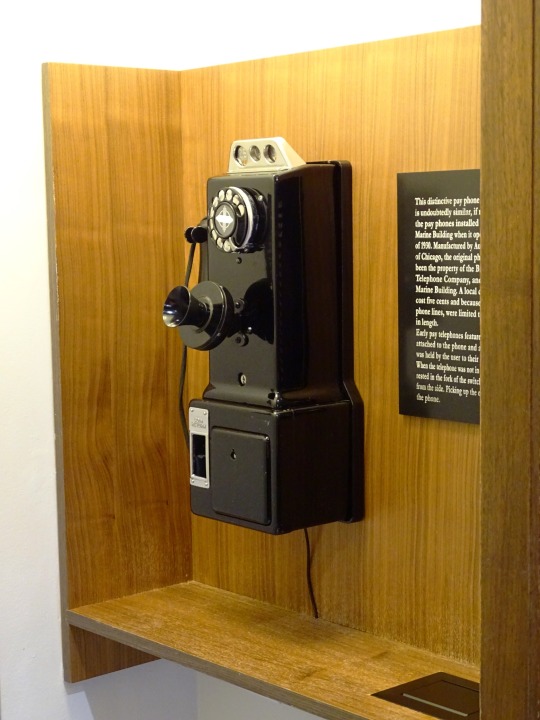
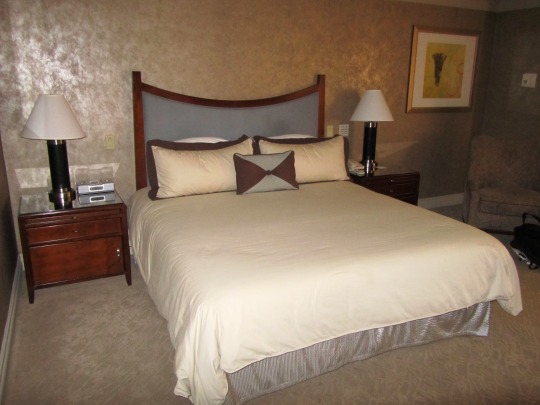
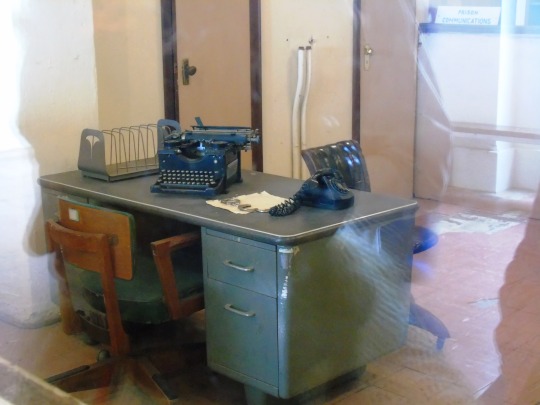

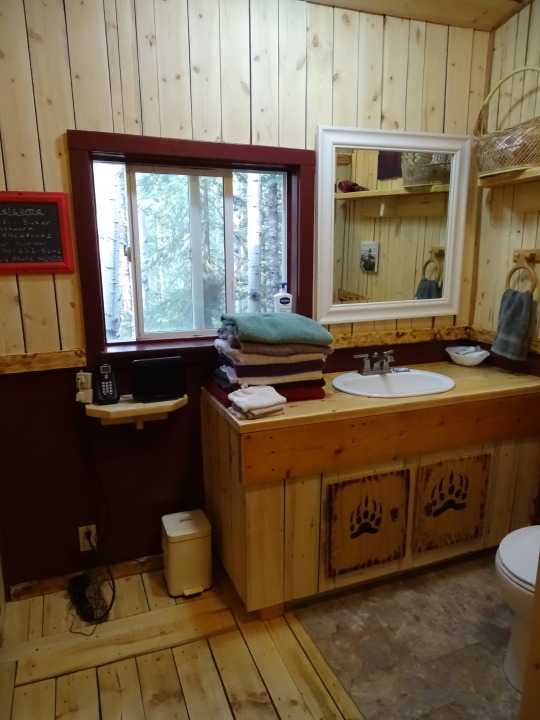
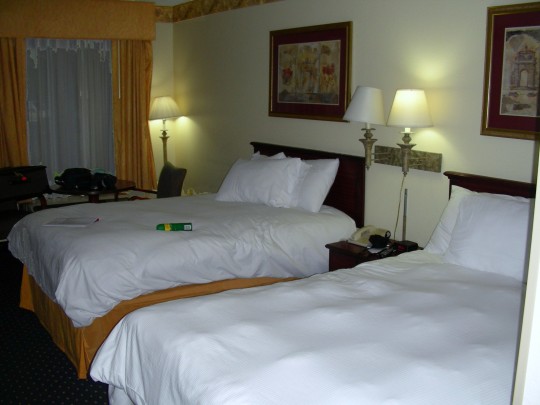





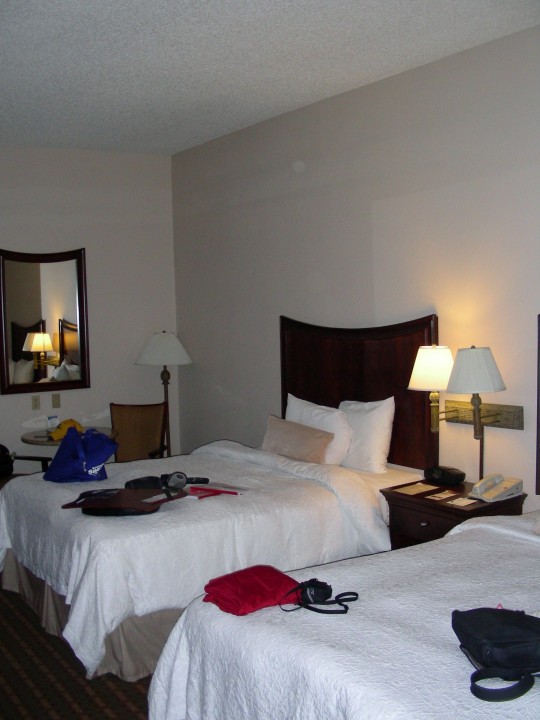



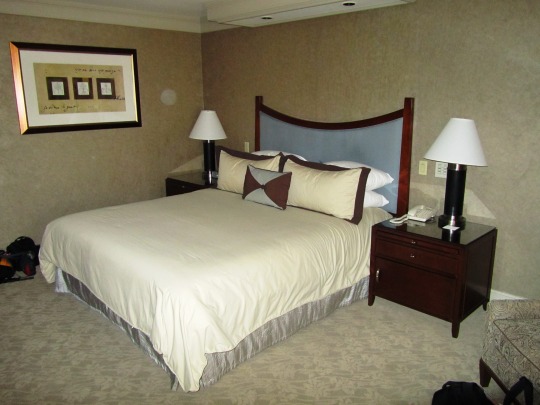
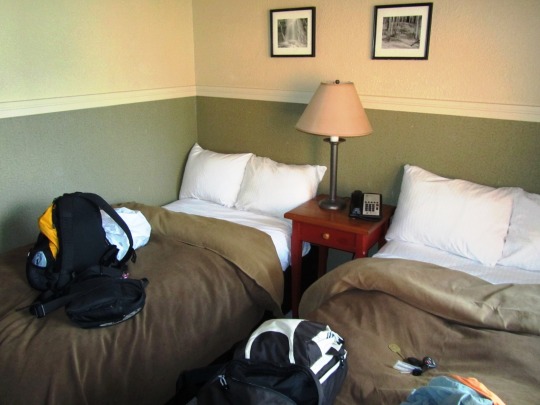
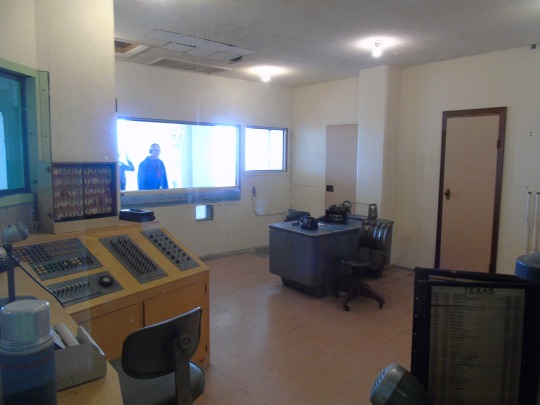

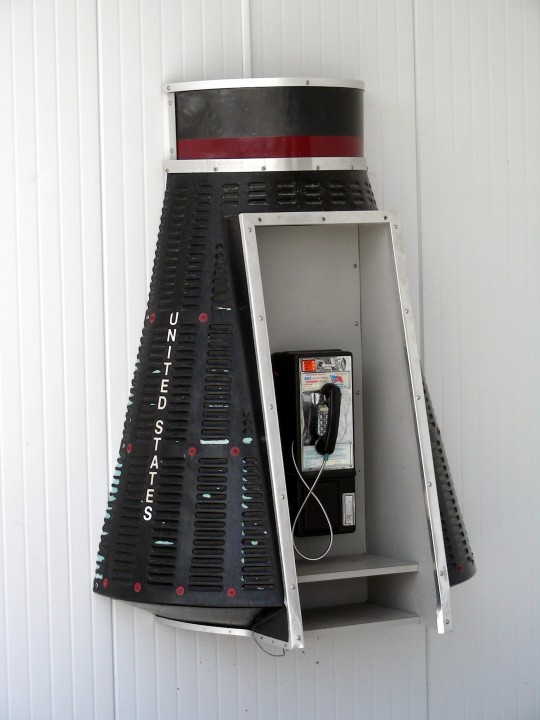
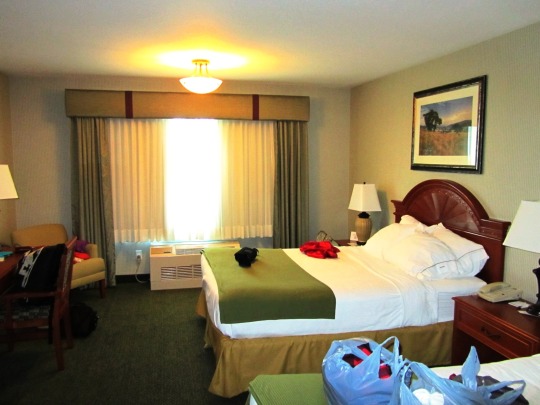
National Telephone Day
The invention that revolutionized communication forever, this device brought people closer together and made the world feel smaller.
“Mr. Watson – come here. I want to see you.” These are the famous first words that were spoken over a telephone line when Alexander Graham Bell made the first call to his assistant in 1867.
And that was the beginning of National Telephone Day!
History of National Telephone Day
Since its invention, the telephone has grown in popularity and use as a technology that has paved the way for such important communication that now happens every day, every moment, all throughout the globe. With billions of mobile phones in people’s pockets and landlines in many homes, the world is a connected place thanks to the invention of the telephone more than 150 years ago.
While Alexander Graham Bell already has his own day on March 7, National Telephone Day is here to show appreciation for the creativity and ingenuity shown by not only Bell, but also so many of his contemporaries. It’s a time to pay respect and honor to so many inventors who never stop pushing the boundaries of what is possible in the world!
How to Celebrate National Telephone Day
Pay respect and honor to the inventors of the past and the future on National Telephone Day. Consider some of these ideas for observing the day:
Make a Telephone Call
With texting and email as popular forms of communication, the telephone call may have taken a backseat in recent years. However, perhaps National Telephone Day would be a great time to step back in time and make a telephone call, just for the sake of nostalgia!
Encourage Young Scientists
Alexander Graham Bell was encouraged by his family to be creative and curious about the world. It’s likely this support and his access to education that allowed for the invention of the telephone at that time. In the same way, access to education in today’s world is critical for young students who might grow up to be the inventors, scientists, mathematicians and engineers of the future.
Whether volunteering as a tutor at a nearby school, supporting the local education system in the community, or providing money for a STEM (Science, Technology, Engineering and Math) student who needs help paying for college, supporting future inventors is a great way to celebrate National Telephone Day!
Learn About Inventors
Get educated on some of those scientists who have been critical in scientific and technological advances in the past for National Telephone Day. Look up some of these folks online and learn a bit more about them:
Josephine Cochrane(1839-1913), inventor of the mechanical dishwasher.
Frederick McKinley Jones (1893-1961), developer of modern refrigeration equipment.
Johannes Gutenberg (1400-1468), inventor of the printing press.
Grace Hopper (1906-1992), creator of the first computer programming machine language.
Keep Inventing and Creating
National Telephone Day serves as a reminder to those inventors, creators, engineers and scientists that continuing to pursue new things can pay off! The world is not a static place and many opportunities are still out there, waiting to be discovered. So take this day as a bit of inspiration or encouragement to keep on growing and learning and inventing.
Source
#AirBnB#hotel room#Marine Building#Alcatraz Federal Penitentiary#United States Penitentiary Alcatraz Island#USA#San Francisco#Japantown#Graceland#Memphis#travel#vacation#original photography#NationalTelephoneDay#National Telephone Day#25 April#Kennedy Space Center Visitor Complex#Bellagio - Las Vegas Luxury Resort & Casino#tourist attraction#architecture#Vancouver#Canada
0 notes
Text

Black Investors: Frederick McKinley Jones (1893-1961) Frederick McKinley Jones left his mark with the development of refrigeration equipment, receiving over 40 patents for it. In the 1930s, he began inventing automatic refrigerated air-cooling units for trucks, trains, ships, and planes, which helped the preservation of food. His creation, the Thermo King, allowed people to eat fresh food year-round. His work also contributed to the preservation of blood and medicine, proving to be particularly useful during WWII. In 1991, he became the first African American to receive the National Medal of Technology. #blackhistorymonth
0 notes
Text

Black Investors: Frederick McKinley Jones (1893-1961) Frederick McKinley Jones left his mark with the development of refrigeration equipment, receiving over 40 patents for it. In the 1930s, he began inventing automatic refrigerated air-cooling units for trucks, trains, ships, and planes, which helped the preservation of food. His creation, the Thermo King, allowed people to eat fresh food year-round. His work also contributed to the preservation of blood and medicine, proving to be particularly useful during WWII. In 1991, he became the first African American to receive the National Medal of Technology. #blackhistorymonth
0 notes
Text
NIHF Inductee Frederick McKinley Jones Refrigeration Invention
"NIHF Inductee Frederick McKinley Jones Refrigeration Invention" https://www.invent.org/inductees/frederick-mckinley-jones
Black Indigenous People worldwide comes in all skin colors and hair textures. Mr. Jones always embraced his Blackness proudly because like all of us we are the original humans on earth and some of us never sold ourselves out to pass for whiteness.
0 notes
Video
youtube
Frederick McKinley Jones: The Black Genius Who Invented Portable Refrige...
0 notes
Text
This Black History Month, Feeding America is celebrating the Black inventors who had a profound impact on our mission.
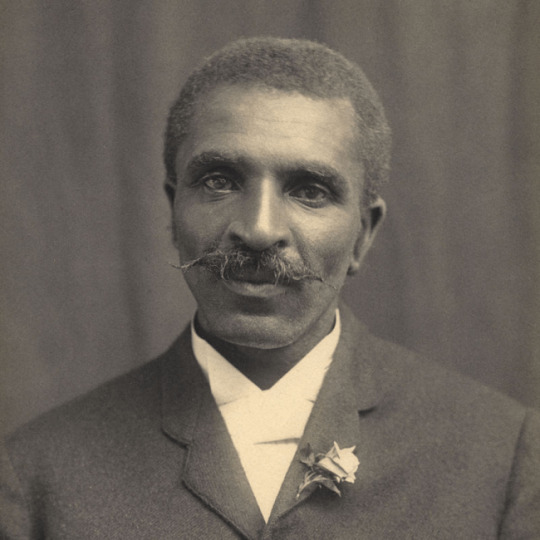
People like George Washington Carver, also known as Mr. Peanut for his revolutionary work creating new products from a single crop, the lowly peanut. And Alice H. Parker, a Black woman who never got the credit, or the fortune, for inventing what we now know as zoned home heating using natural gas. These trailblazers helped America transition to a major agricultural exporter. Their inventions helped farmers increase the harvest to the point that American farmers now feed the world, and those in need. At Feeding America, our work is tied to moving food from farmers to food banks. It is our mission to end hunger in America and many of these Black inventors helped pave the way for U.S. farmers to grow more food.
George Washington Carver (1861-1943)
Born a slave in 1861, George Washington Carver went on to become one of the most prolific agri-business inventors in American history. He invented crop rotation, and more than 300 uses for the peanut. including Worcestershire sauce, cooking oil, and cosmetics. His work is at the foundation of modern farming. It is because of crop rotation and the introduction of grain crops like corn and soybeans, that Feeding America can help our food banks provide for our neighbors in need. Carver helped American farmers feed America.
He was the first African American to earn a bachelor’s in 1894, then a master’s degree in agricultural science from what’s now known as Iowa State University. Carver invented crop rotation. Farmers were struggling to grow anything after years of harvesting a single crop. Carver suggested they plant peanuts, soybeans, and sweet potatoes which would add nutrients to the depleted soil. This method gave farmers a second chance at becoming leaders in agricultural exports.
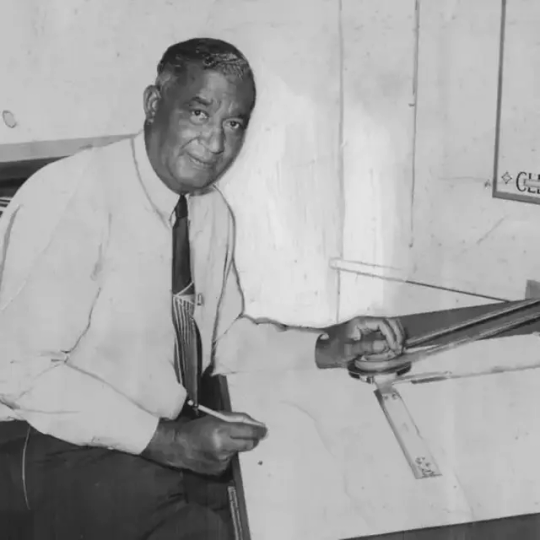
It would be impossible for the Feeding America network of food banks to get the much-needed food they need to nourish feed our neighbors without the work of this man, Frederick McKinley Jones. He invented refrigerated trucks, which help food banks provide fresh produce and meat to their communities safely. And, because of his work, food banks can rely on our massive distribution network to transport fresh produce from farmers across the country on a regular basis. In fact, our network moved 3.8 billion pounds of dairy, produce, and meat -- perishable foods that wouldn’t be available were it not for refrigerated trucks, trains, planes, and ships.
His work revolutionized global logistics. It’s at the heart of what’s now known as “the supply chain.” That is, he made it possible to transport perishable food safely from one place to the next. He co-founded the U.S. Thermo Control Company (Thermo King) which was worth millions by 1949 and later acquired by Westinghouse.
A self-taught mechanic and World War I Army veteran, Jones received more than 60 patents for refrigeration as well as X-ray machines, engines and sound equipment. He was the first African American to receive the Presidential National Medal of Technology.
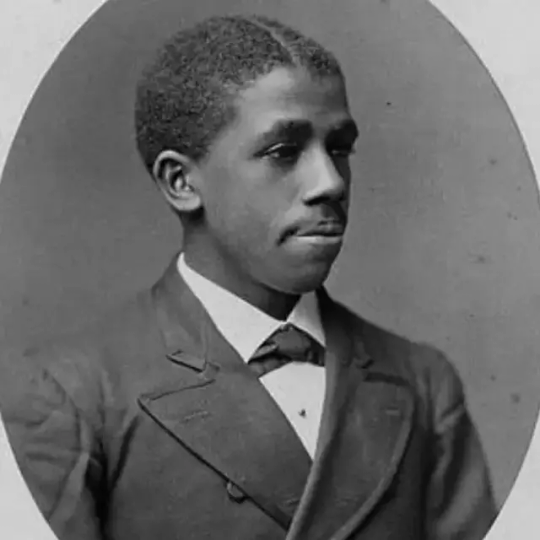
A farmer and a free man before the Emancipation Proclamation, Henry Blair invented two devices to increase agricultural productivity. The first was the corn planter in 1834, and the second was the cotton planter in 1836. His goal was to reduce inefficiencies from manual labor. The Mechanics Magazine published August 6, 1836, described it as “saving the labor of eight men.” Blair’s discoveries helped farmers grow more food for the masses, not just their local communities. For Feeding America, farmers are at the heart of what we do. A large percentage of the food our neighbors receive at their local food pantry is packaged right on the farm where it's grown thanks to our partnership with the USDA. Inventions like Blair's are what fuel the heartland.
While not at the heart of our mission, Feeding America often helps people in need who have to make the tough choice between paying for heat or buying food. During cold winter months, there are many who choose to pay their heating bill and forsake food. They turn to their local food pantry as a stop-gap. The Feeding America network of food banks provides a safe, consistent place for families in need to access food.
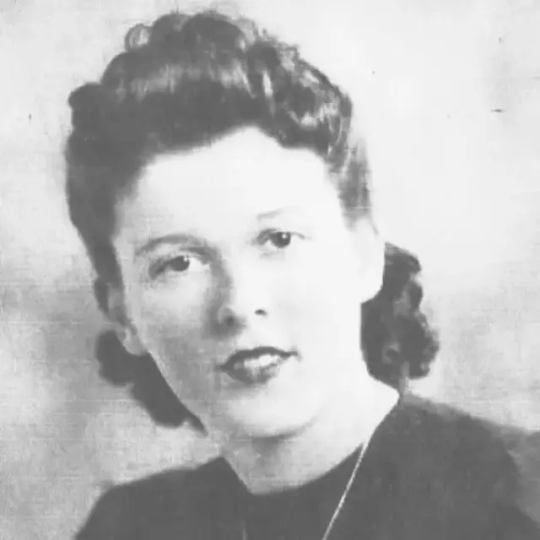
Alice H. Parker, the mother of modern heating, invented the gas-forced air heating system because she too wanted to provide a safe place for families.
Before her invention of the gas furnace, home heating wasn’t safe. Homes were heated with coal or wood-burning fireplaces. Parker was the first to develop natural gas as a cleaner, more efficient alternative to home heating in 1919.
An unsung hero of home heating technology, she revolutionized how we live today. But Parker didn’t have an easy go of it as a Black female inventor. The Civil Rights Movement had yet to give African Americans their rights and the Women’s Liberation Movement was further off. She never profited from her invention. So, we salute her. We know there are many families that struggle with tough choices these days with the rising costs of home heating. But for those who have a warm place to sleep and the modern advances of zoned heat, the next time you adjust the thermostat, say a silent thank you to Alice H. Parker.
5 notes
·
View notes
Photo

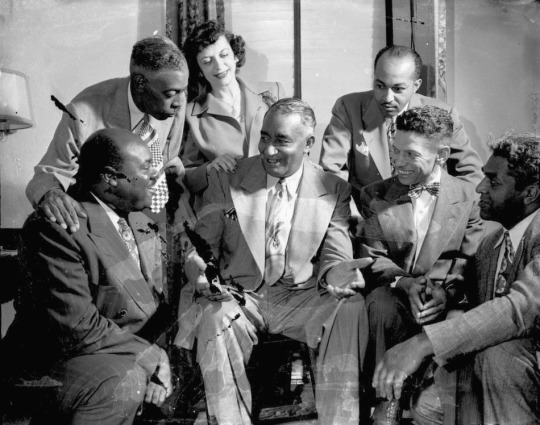
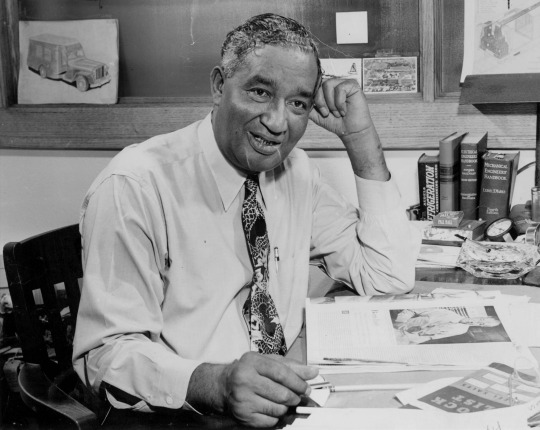
Frederick McKinley Jones, A Great Inventor
On February 21, 1961, Frederick Jones, black engineer and inventor, died at the age of 68. Through his inventions he left a long-lasting legacy. While perhaps best known as the inventor of various refrigeration innovations (including the compact freezing units used by trucks, trains, and planes to transport fresh food around the world) Jones received patents for 21 additional non-refrigeration inventions. Portable X-Ray machines, movie theater ticket dispensing machines, automatic ice cream making machines, gasoline engines, window air conditioning units--we have Fred Jones to thank for those.
Jones’s parents were non-existent for most of his life. As a child, he was taken in by a Catholic priest in Kentucky, who enrolled him in elementary school. But Jones liked to fix things and put things together, not sit in school. He left school at age 11 and soon after began working in an auto garage. By age 14 he was hired as a full-time mechanic, and by 15 was made foreman of the garage.
In 1912, at the age of 19, Jones, rather by accident, got on a train headed west, landing at a farm in Hallock, Minnesota. From there, he heard word of the Hill Farm, operated by Walter Hill, son of “Empire Builder” James J. Hill. The farm was filled with machines, perfect for Fred, the mechanical genius.
Jones served as a sergeant in WWI, then returned to Hallock to continue his mechanical pursuits. In 1930 he was invited to Minneapolis by Cinema Supplies, Inc., which would later become Thermo King. Jones would later become vice president and engineering director of the company, creating innovations that would revolutionize the food transportation industry, benefiting people around the world.
Top photo from the John F. Glanton Collection. Bottom photo from the Minneapolis Newspaper Photographs Collection. View more digitized photographs in the HCL Digital Collections.
#Frederick McKinley Jones#Thermo King#inventors#African Americans#black history#Black History Month#African American inventors#Minnesota#Minneapolis#inventions
32 notes
·
View notes